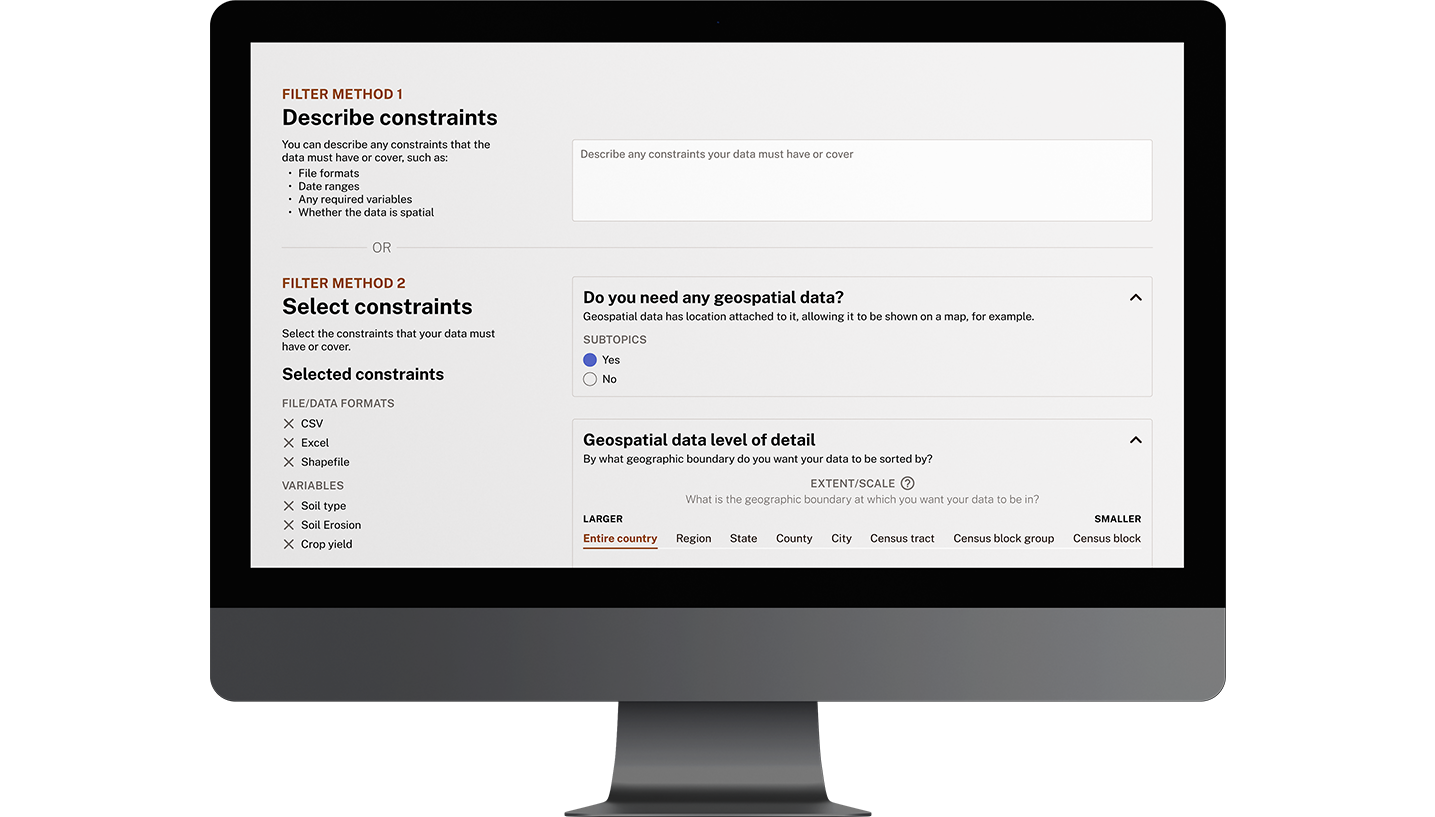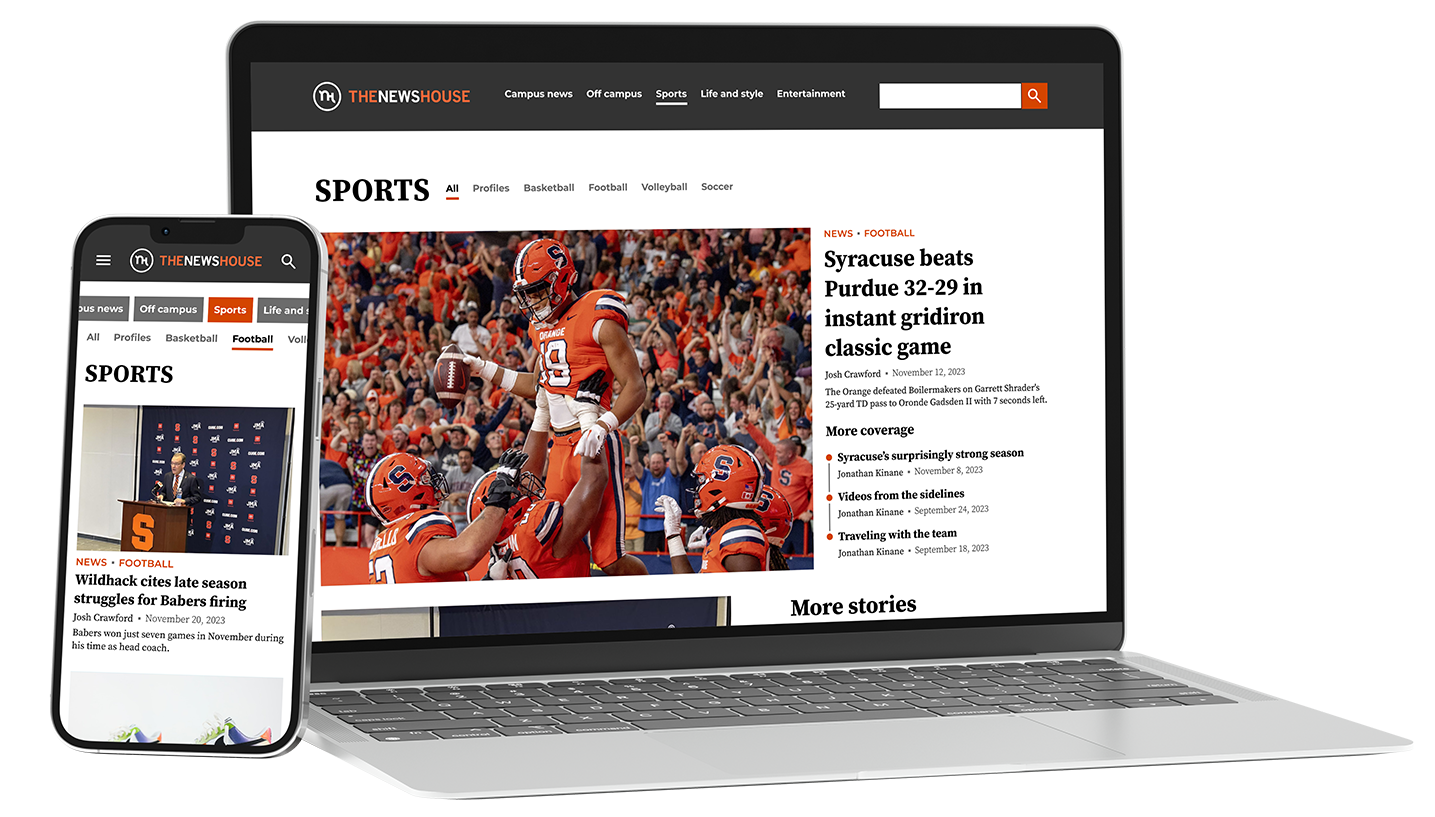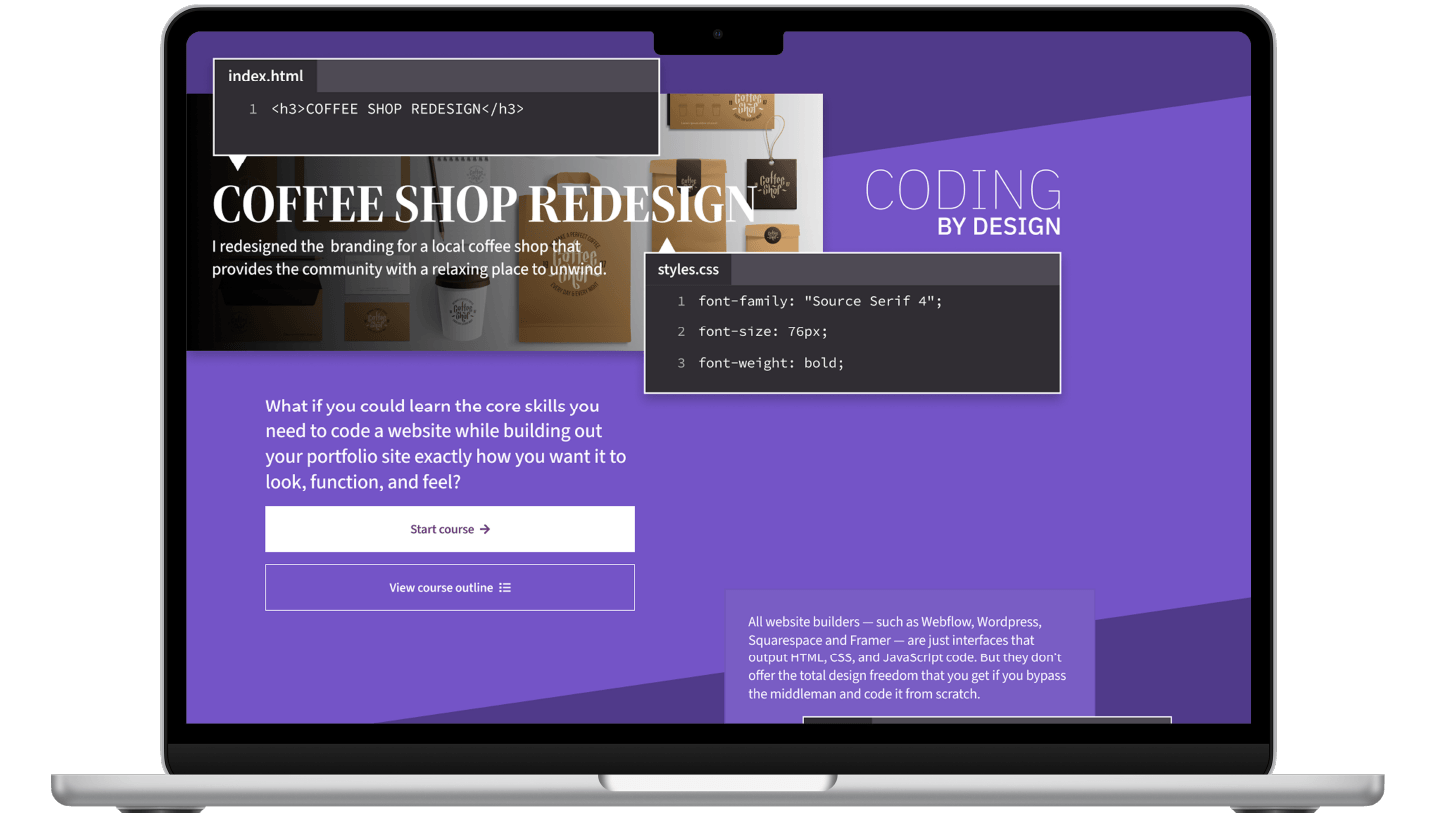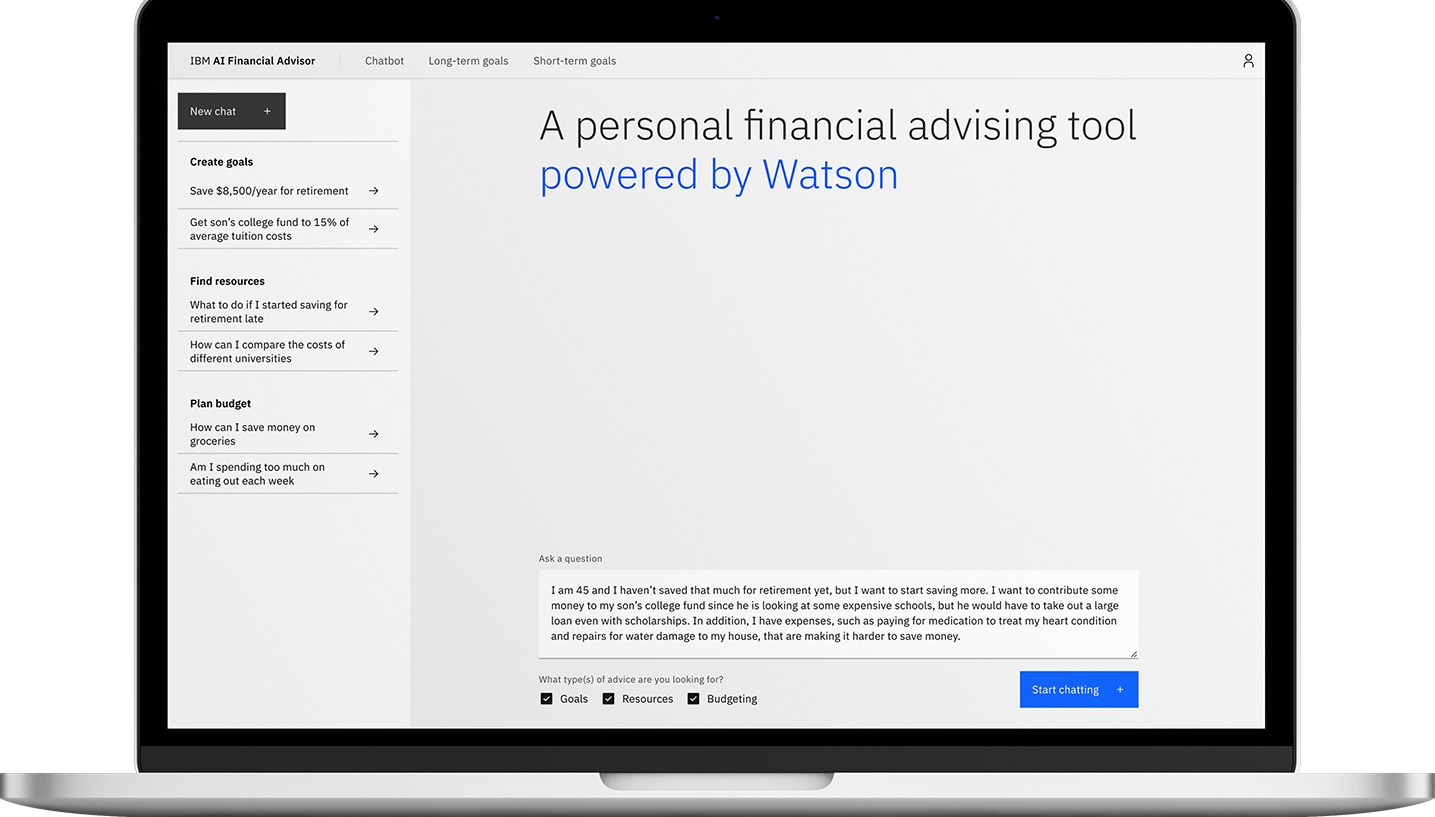As someone who has recently gotten into cartography and data visualization, finding good data can be tough — especially government data! While government data is very robust, expansive, and often times free and open for anyone to download, it can be difficult to find the exact government data you need for a project.
Skip to final designsResearch
Insights from interviews with experts
I interviewed experts such as librarians and professors — people who often work with newcomers to government data — to understand the problems people face in finding this data.
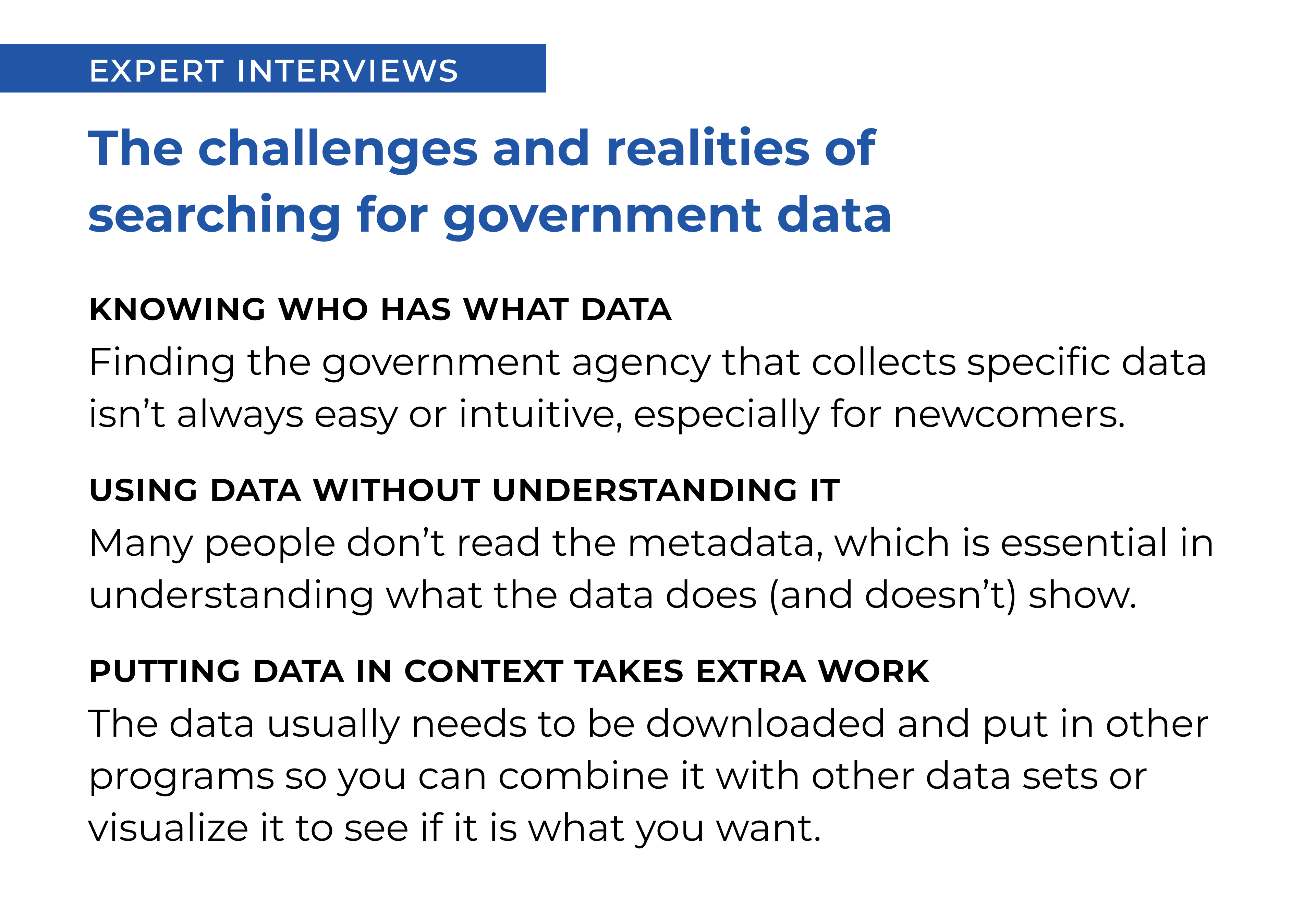
Users
From my discussions with experts, I determined that the main audience who would most need a tool to help find government data would be people who have less experience.
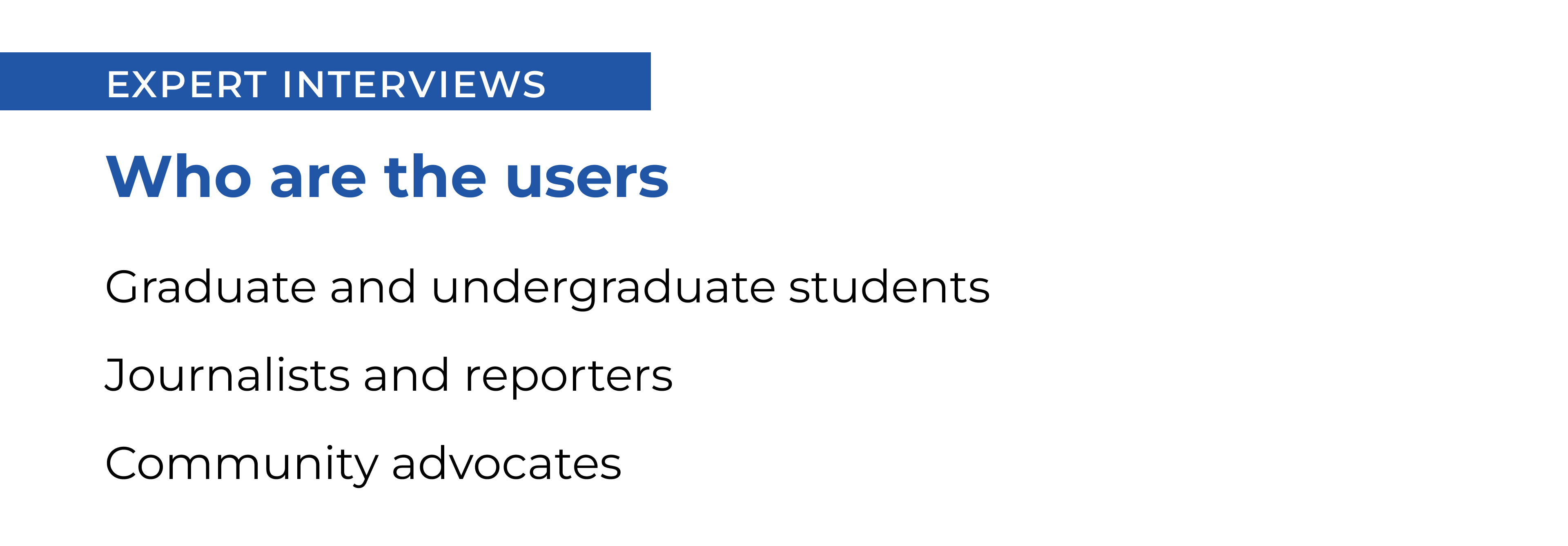
Desk research
After researching both government data and how people find data, I discovered many insights, two of which are listed here.
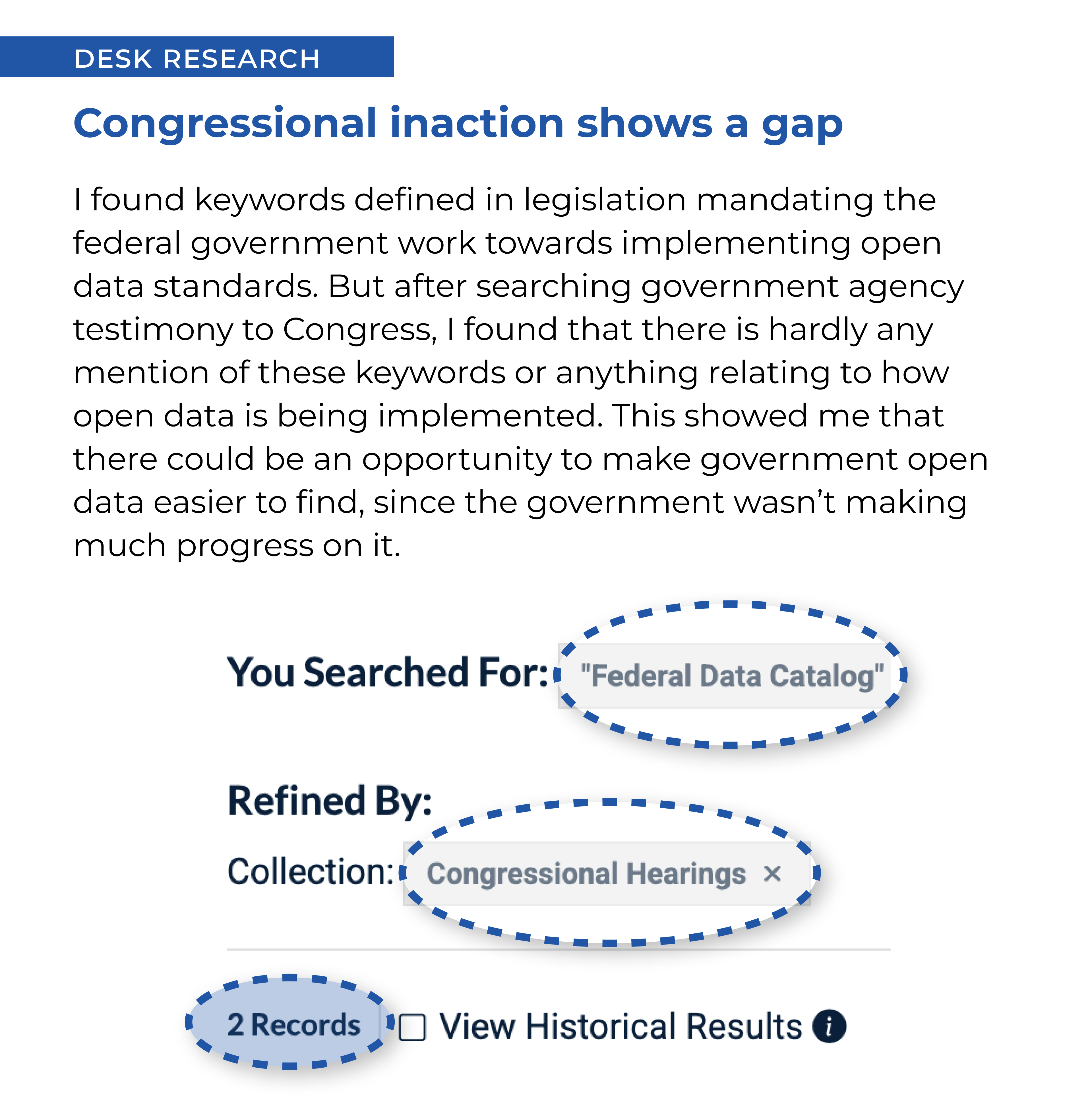
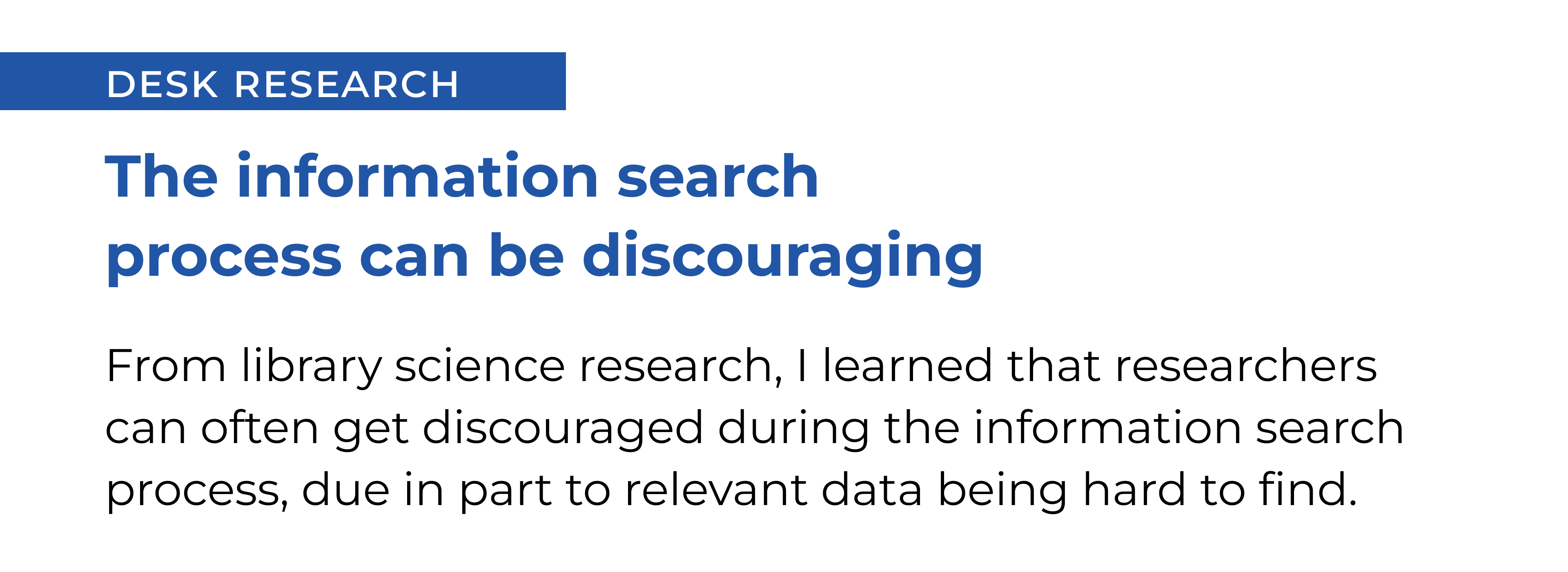
Initial wireframing and testing
Emphasizing geospatial filters
Context
GIS (Geographic Information system) specialists told me that when looking for geospatial data, the first thing they do is outline the type, file format, and level (such as state, county, city, school district, etc.) that the data needs to be in.
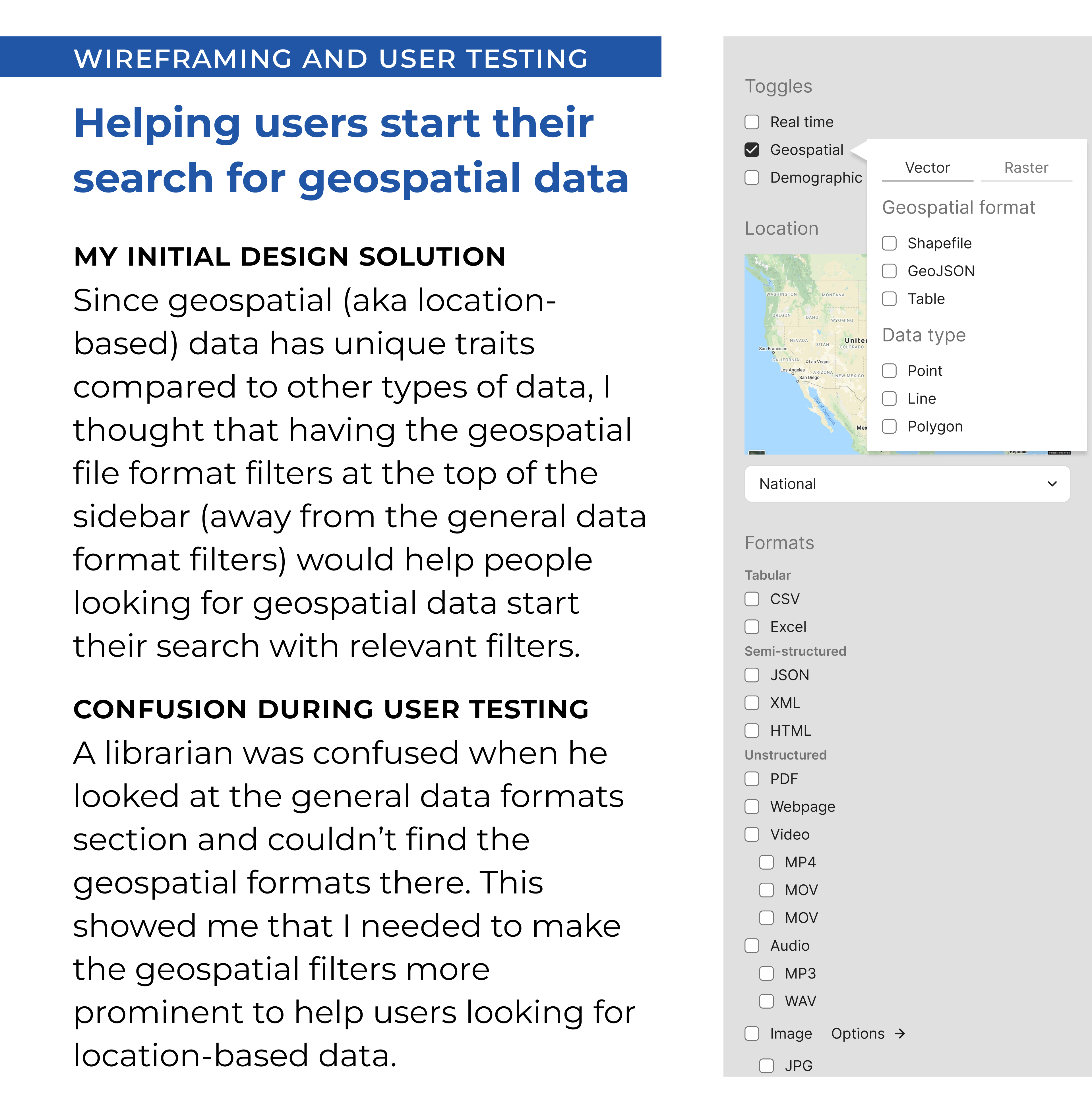
Taking a (slight) U-turn
An expert challenges my initial assumption
I talked to an immigration data expert who (half-jokingly) said that he thinks a license should be required to use government data. Even though he was joking, he said that many people use government data without thinking critically about it, leading them to make inaccurate claims and insights.
My takeaway
Simply making more data available in one place won't help people use the data correctly. So I revised my goal to not only design a platform to help people find government data, but also to help them use it correctly.
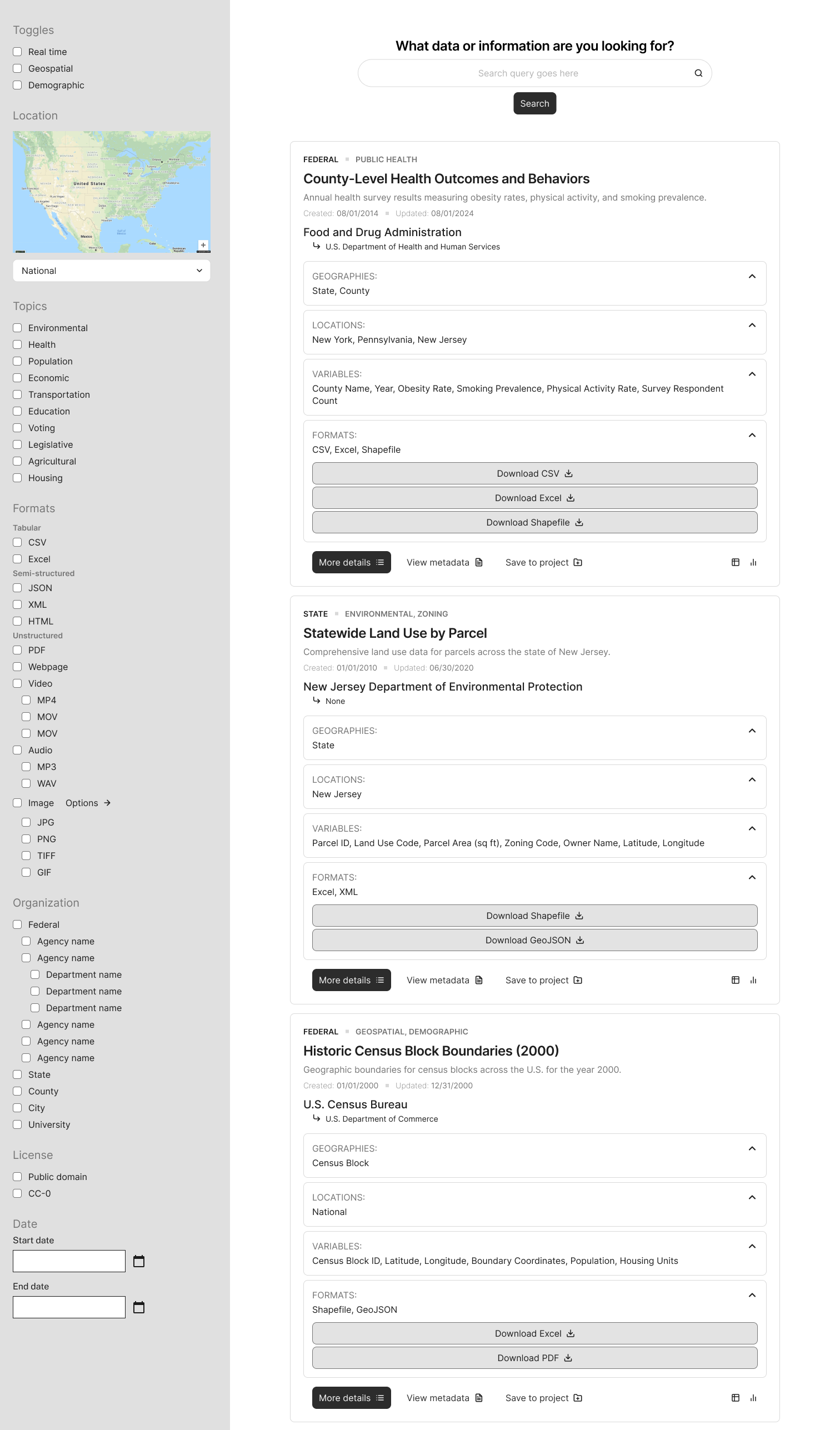
Iterating and prototyping
A step-by-step search
A data tool for newcomers
In a typical interface where a user can search for data, they are immediately shown the search results and filters together, without much or any explanation about what the different filters mean. Data newcomers might not know where to start, especially in the case of government data since different agencies and levels of government can collect similar (or even the same) kinds of data.
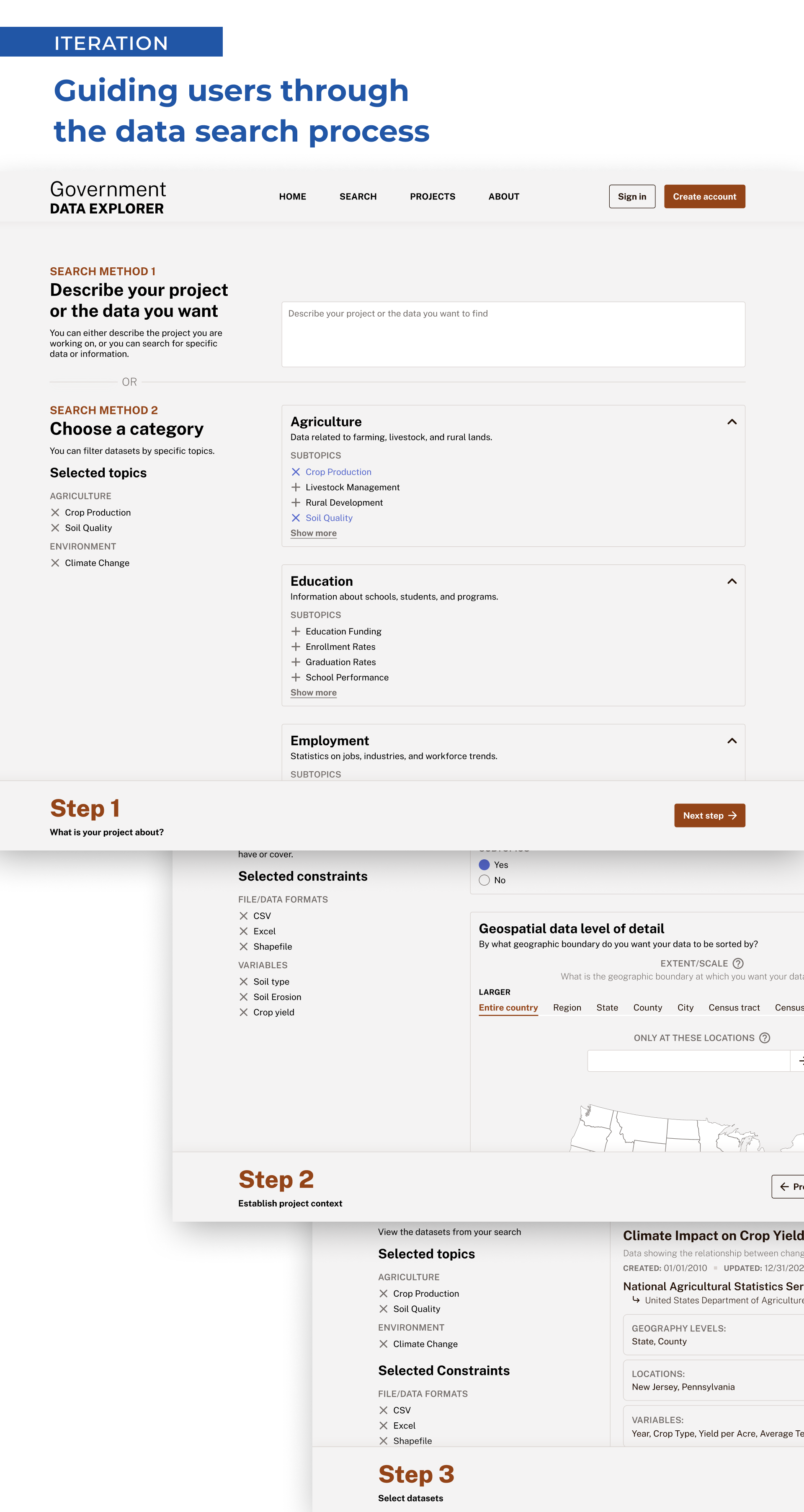
Final designs
Search step 1
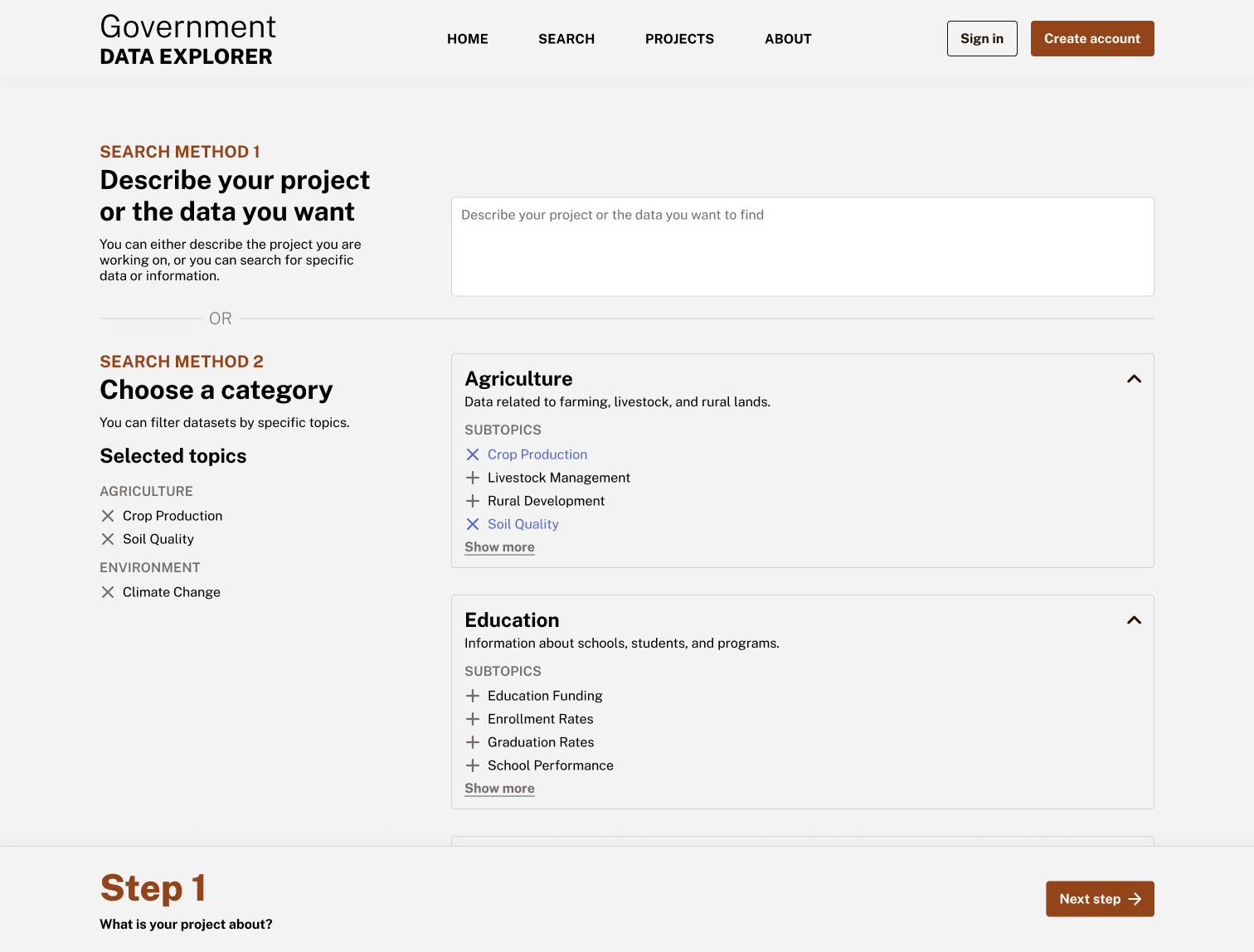
Search step 2
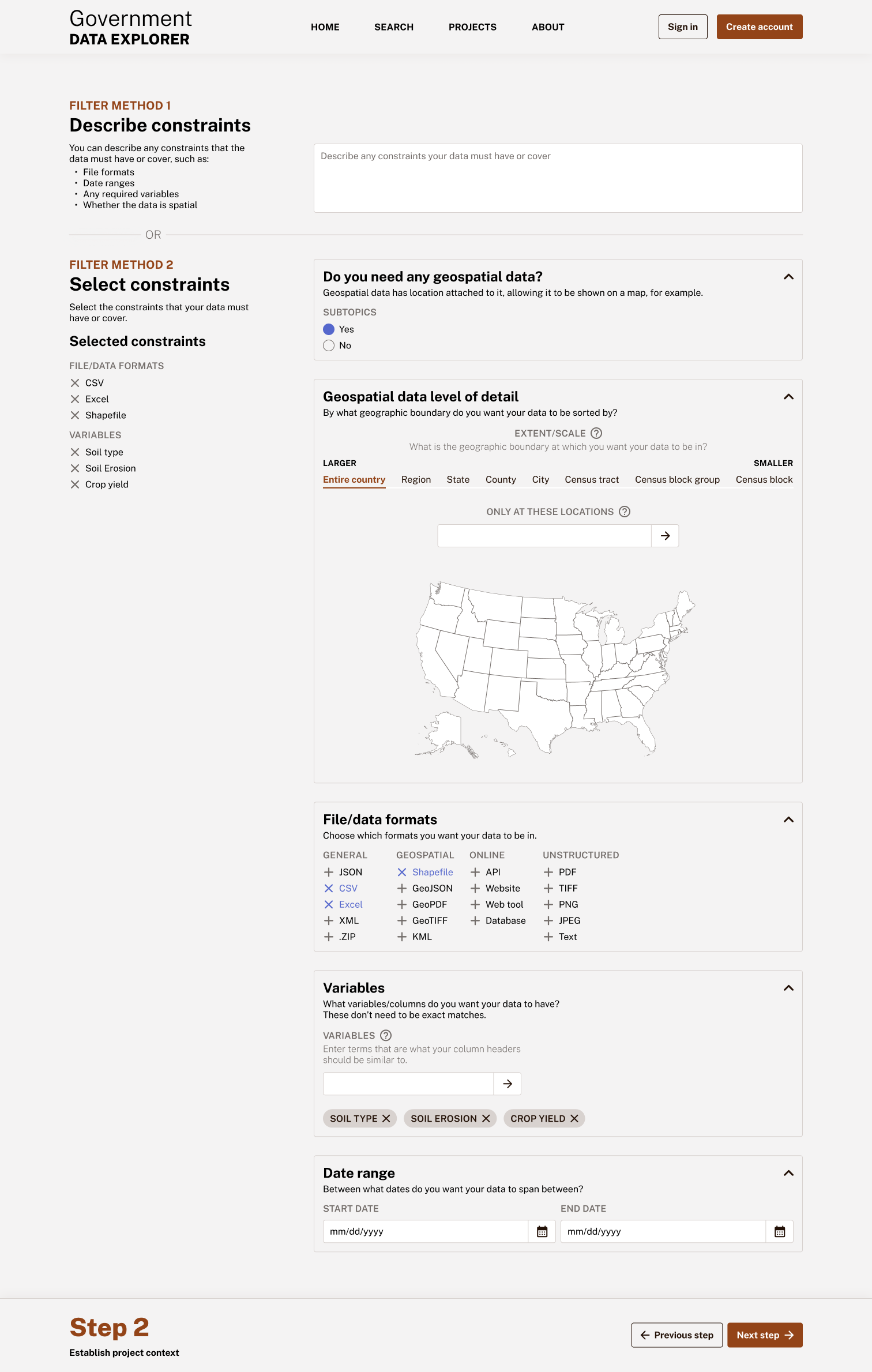
Search step 3
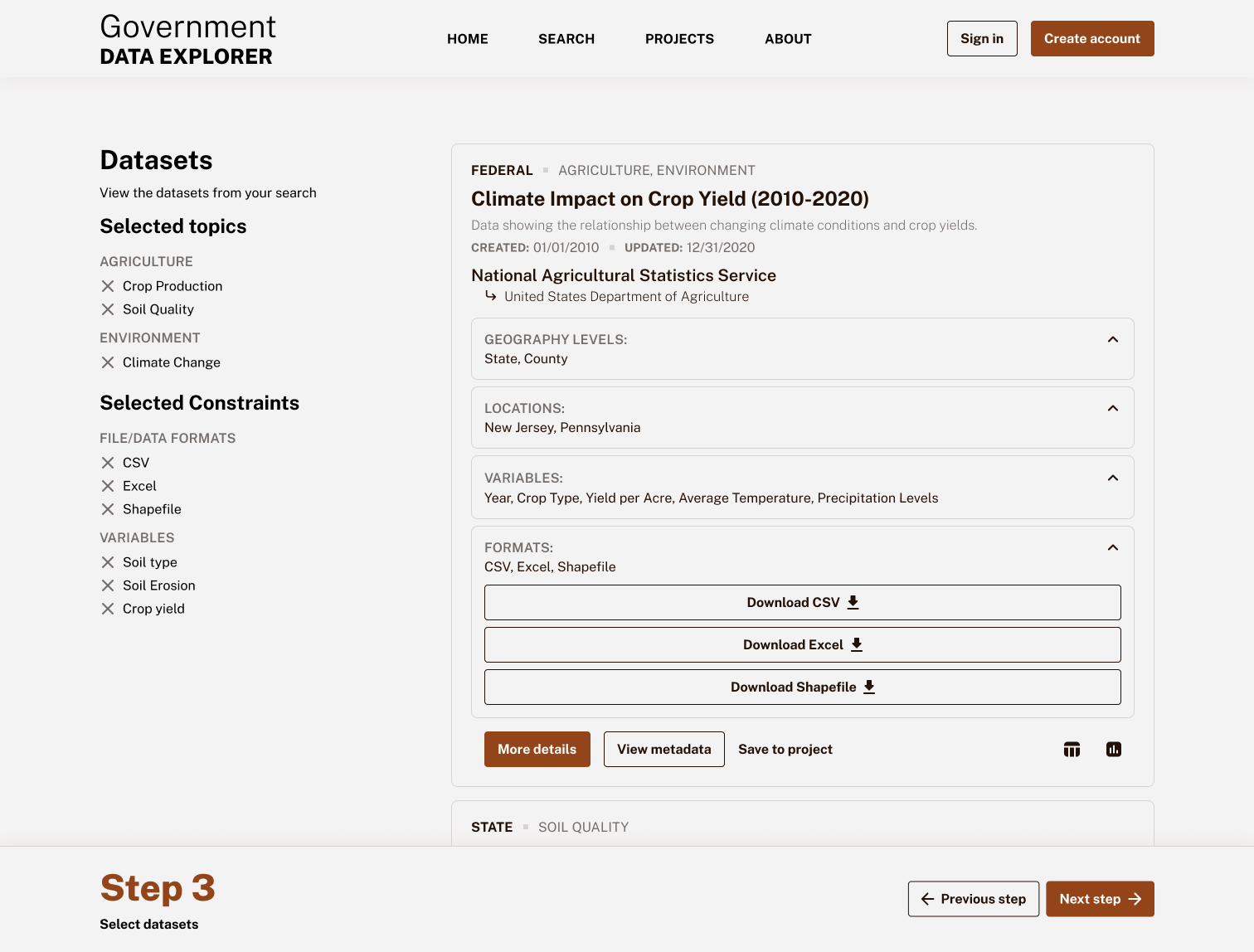
Discussion board
Many government data tools don't offer much explanation about the datasets beyond the metadata (which many people don't read). This is why I added a discussion board to the datasets so that users could learn from each other. I added a verification feature as a quick way to see a user's credentials and credibility.
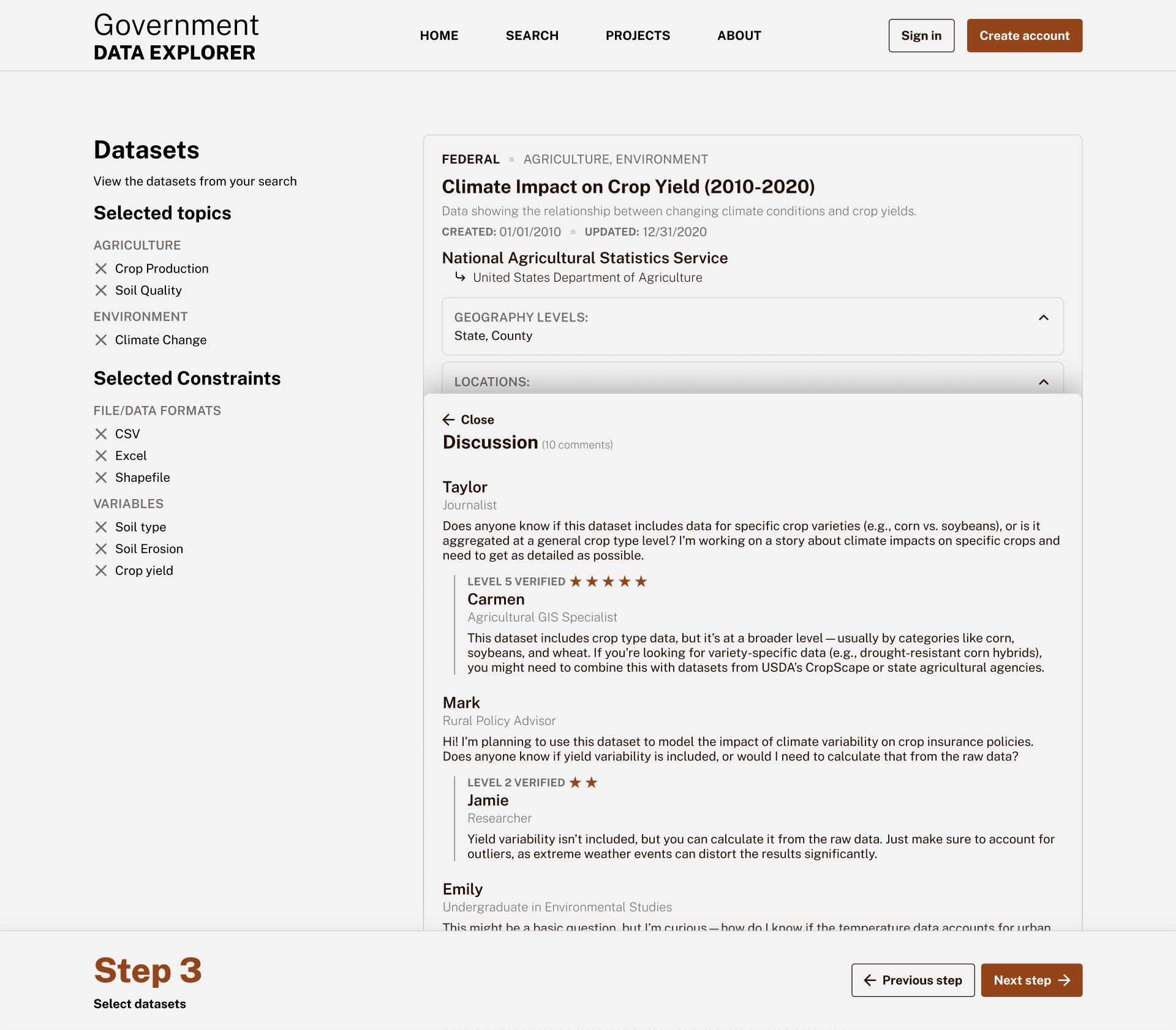
Lessons learned
Working in a complex domain
As someone who doesn't have a lot of background knowledge of government data, I quickly got up to speed on the problems and constraints that would come with making a tool like this.
Research comes in many forms
I conducted UX research for this project in some interesting ways, such as searching through Congressional transcripts, analyzing existing interfaces, talking to experts, and reading academic articles to better understand the topic and problems.

